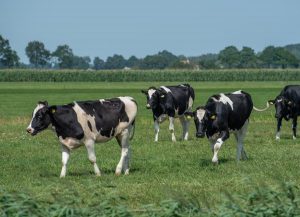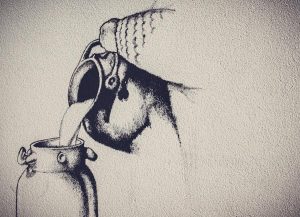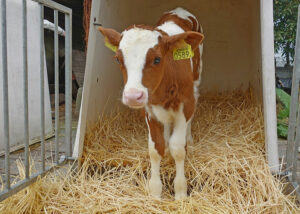Joaquin Ventura and Fernando Diaz
Monitoring the growth of baby calves provides information on the effectiveness of the nutrition program with which they are being raised and helps control health problems. The main goal of heifer-rearing programs is for animals to demonstrate their full development potential and reach their first calving at 24 months of age.
Estimating the weight of calves by simple observation is highly inaccurate. The gold standard method to estimate the calves’ weight is a calibrated electronic scale; it requires however lots of work and a high initial investment.
An alternative method for more accurately estimating weight is to measure thoracic perimeter; in this case a significant economic investment is not necessary, but a lot of work is needed and the measurement may not be as accurate if the operator in charge of doing so has not been adequately trained. There are other methods of weight estimation (measuring horn circumference, hipometer, etc.), but they are either not accurate enough or only serve during very specific periods of the calves’ development.
The objective of a study published in the Journal of Dairy Science was to validate whether a partial weighing scale connected to an automated feeder for pre-weaning calves could accurately estimate their weight, compared to weighing twice a week on a calibrated digital scale.
The study included 20 Holstein calves monitored from birth to 84 days of age, when they reached a weight of 100.04 ± 17.04 kg. Calves received 10 liters of milk replacer per day for 56 days and were weaned by reducing milk intake by 50% for 14 days and then 20% for seven more days.
The automatic feeder had a radio frequency identification panel attached to the scale, so that the calves had to be placed with the two front limbs on it to access the milk from the artificial nipple. This led to weighing all animals under the same conditions. The weighing of the calves on the feeder scale and on the calibrated digital scale were compared using Pearson correlations, linear regression, and Bland-Altman charts.
The main findings of the study were:
- Pearson’s correlation coefficient between partial weighing on the feeder scale and on the calibrated digital scale was very high (0.99 for a maximum of 1).
- As for the Bland-Altman charts, the difference between weighing collected in the feeder and those of the digital scale was 0.45 ± 2.33 kg (mean ± standard deviation).
- The slope of the linear regression was not different from 1 (slope = 1.01; 95% confidence interval ± 1.00–1.03), suggesting again that the partial weight scale was accurate.
Conclusion
In conclusion, partial weights obtained using the scale installed in the feeder were validated with high precision using three different statistical methods compared to the weights obtained with a calibrated digital scale, the method considered the gold standard for weight control of growing calves.
Thus, the authors showed that partial weighing of growing calves using the method used in this study can be a precise and useful tool for producers.
Reference
Melissa C. Cantor, Charlotte H. Pertuisel, and Joao H. C. Costa. 2020. Technical note: Estimating body weight of dairy calves with a partial-weight scale attached to an automated milk feeder. Journal of Dairy Science. 103: 1914 – 1919.
© 2021 Dellait Dairy Knowledge Center. All Rights Reserved.









